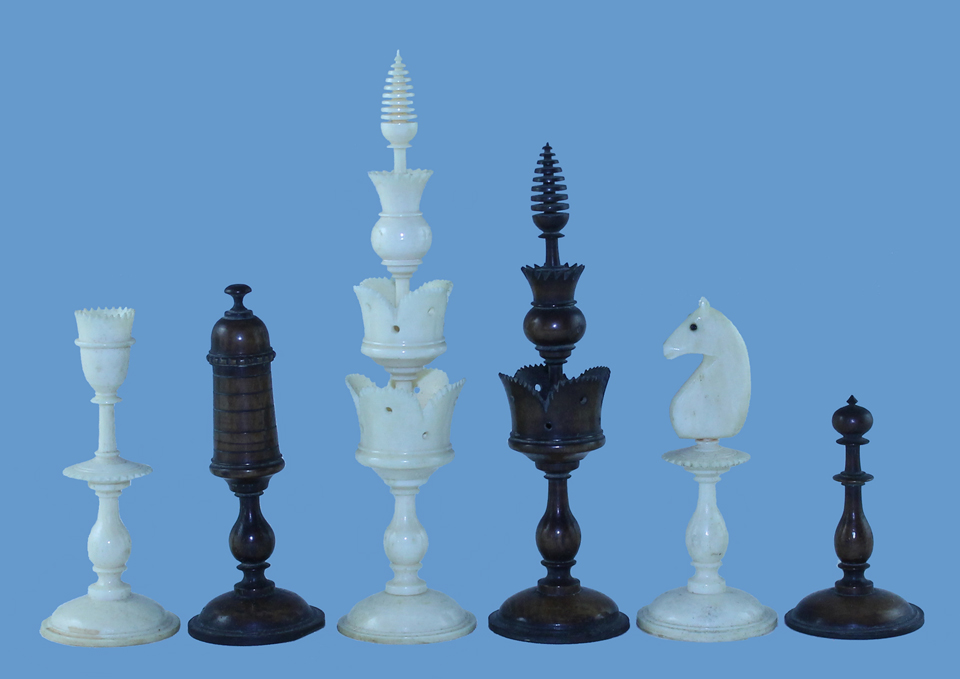
Pictured above are pieces from a chess set made of bone or ivory. The pieces are of a style popular in Germany and central and northern Europe from the 17th to the mid-19th centuries known as the Selenus style. This set probably dates to the early or mid-19thcentury.
Selenus chess sets are named after a 1616 book on chess published in Leipzig under the name Gustavus Selenus. Gustavus Selenus was a pen name for Augustus the Younger, Duke of Brunswick-Lüneburg. The name Gustavus is an anagram of Augustus with one “u” changed to a “v”. The name Selenus is an oblique reference to the town of Lüneburg by way of the Greek goddess of the moon Selene, and the Latin term “luna” meaning moon. Duke Augustus had a reputation as being one of the most literate rulers of the period, and in addition to his book on chess he produced a work on cryptography and helped create what was one of the largest libraries in northern Europe.
Selenus chess pieces feature tall slender shafts often topped with tiers of florally inspired designs. As a result, they are sometimes referred to as “garden” chess sets. Pieces are often identified by their height or the number of tiers, as evidenced by this set in which the king is the tallest with three tiers topped by a cone-shaped floral spike.
Who this chess set belonged to is unclear. It is not known if Henry Longfellow played the game, but he seems to have had at least a passing interest in it, as he recorded in his journal going to see the celebrated American chess player Paul Morphy in 1859. Henry wrote “Morphy played serenely, and with a delicate nervous touch, as if the chessboard were a musical instrument.”
